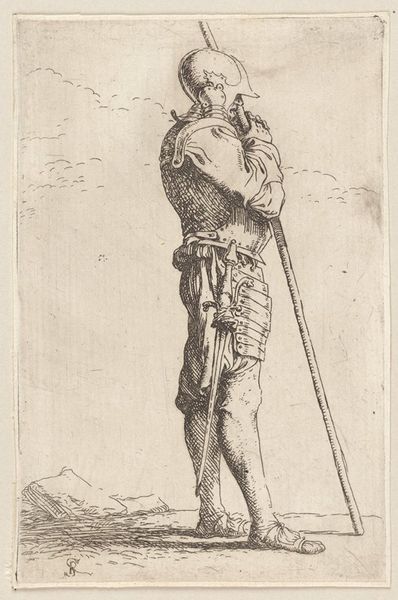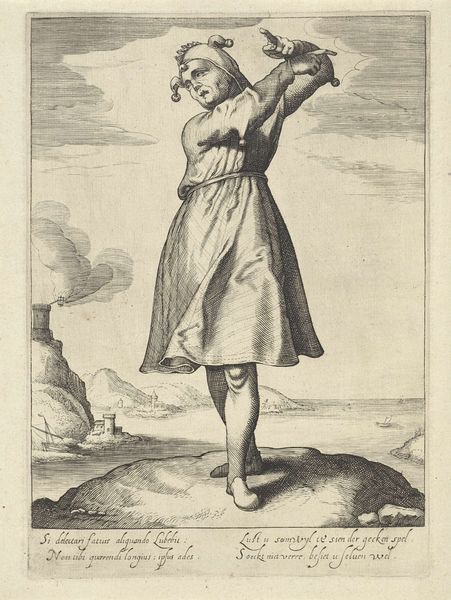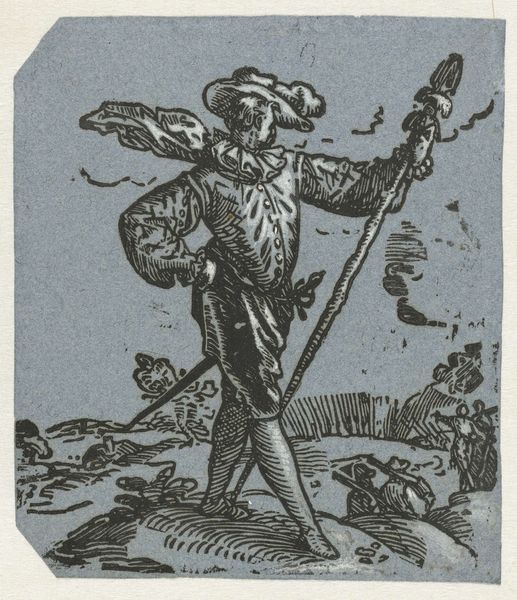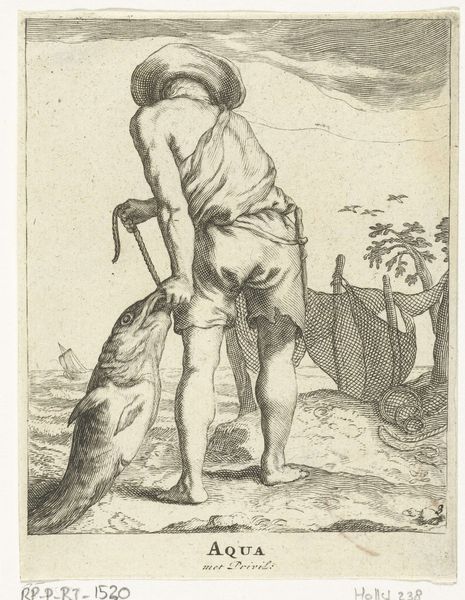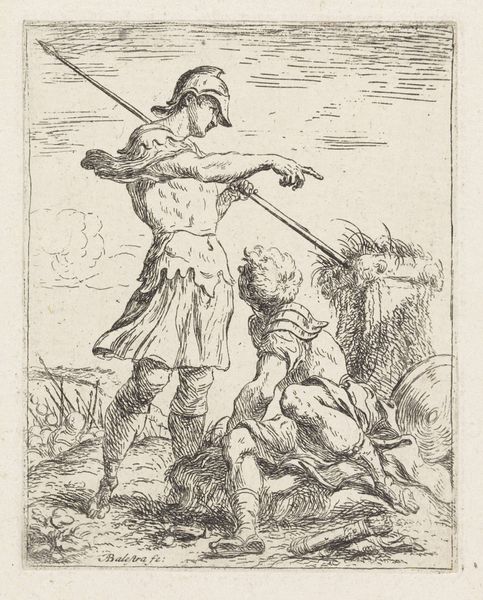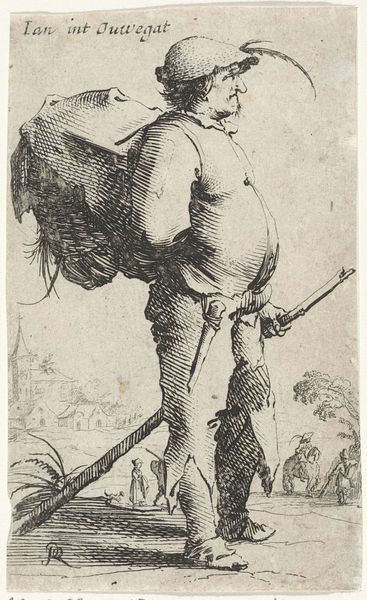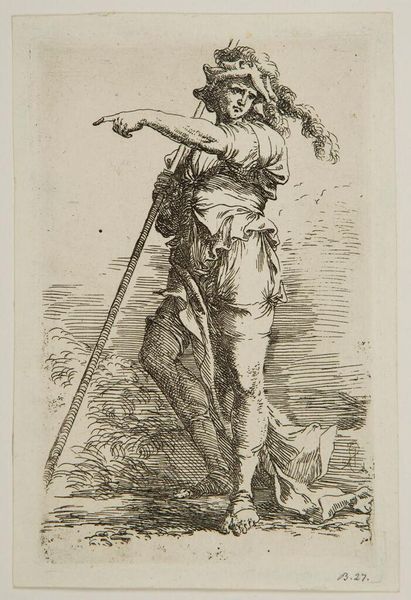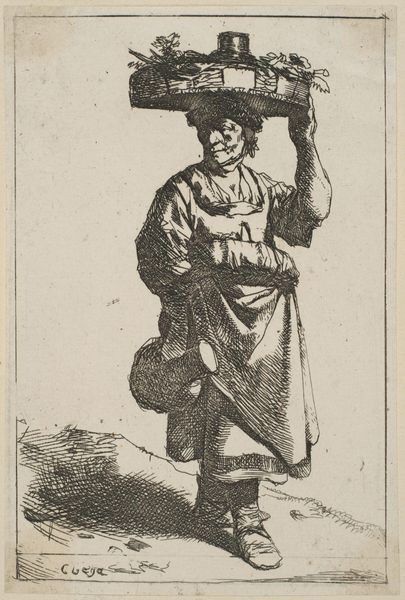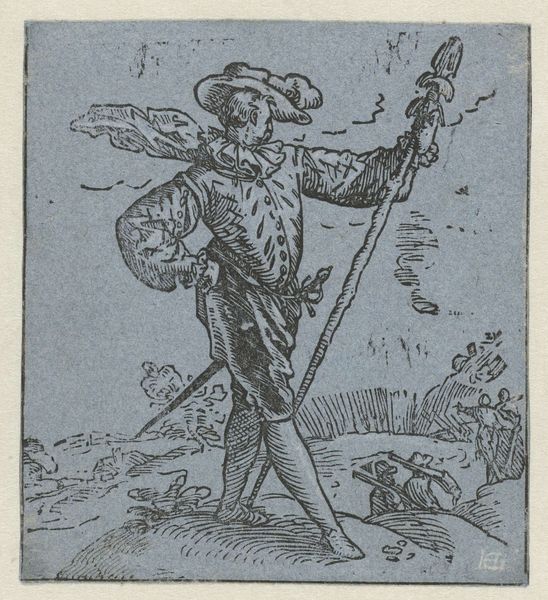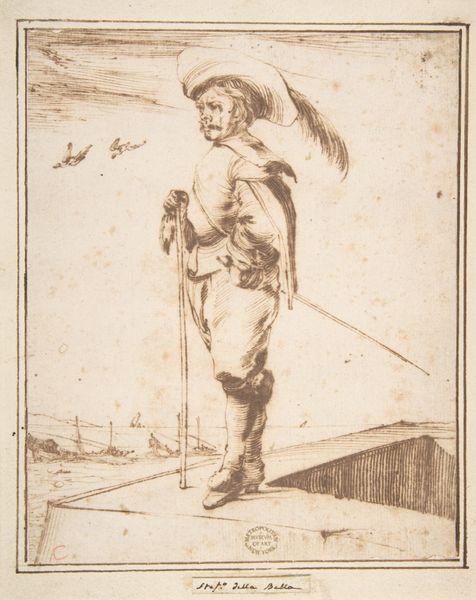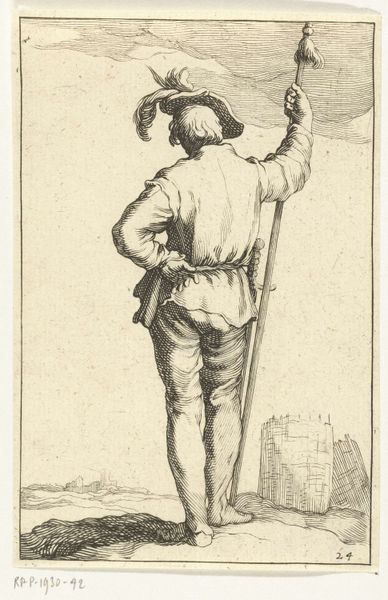
print, etching
#
dutch-golden-age
# print
#
pen sketch
#
etching
#
pencil sketch
#
landscape
#
pen-ink sketch
#
sketchbook drawing
#
genre-painting
#
sketchbook art
Dimensions: height 163 mm, width 98 mm
Copyright: Rijks Museum: Open Domain
Curator: Aert van Waes created this etching, “Man krabt aan zijn schouder,” sometime between 1639 and 1684. It's currently held at the Rijksmuseum. Editor: I'm struck by the texture and the isolation. There's a real weight to the figure even though it's just lines on paper. He seems burdened somehow. Curator: Given the period and the etching technique, we can think about the printmaking trade at the time. These were mass-produced images, relatively speaking. This makes me wonder about who this man represents in terms of broader society in the Dutch Golden Age. Editor: It looks like it's not just any man—check out the layering in his clothes, the hat. And the way he holds that walking stick tells a story about rural life and work. Is he a wanderer or a laborer returning home? The means of depicting the man—etching and printing—mirrors something about labor and distribution of imagery in that moment of capitalism. Curator: Absolutely. We might interpret his action of scratching as a symbol of something more profound – perhaps discomfort or being burdened, maybe even an act of defiance against an oppressive situation. Does this depiction connect with narratives of labor or social rebellion that emerge during this time? Editor: I see your point about that gesture having symbolism. Etching and printing allowed for a democratization of images, to some extent, which is compelling, since those images could be circulated among the popular classes more readily than painted artwork. Considering the cost of the supplies to make etchings, even the creation of such art became more financially manageable and inclusive. Curator: It's amazing how a simple scene evokes such deep socio-political themes. It challenges us to investigate the material reality and the historical narrative surrounding the art form. Editor: Yes, seeing how those lines become more than an image. It's an invitation to contemplate production and circulation beyond just what's shown, reflecting on labor and how artworks of this kind existed materially in their time.
Comments
No comments
Be the first to comment and join the conversation on the ultimate creative platform.
